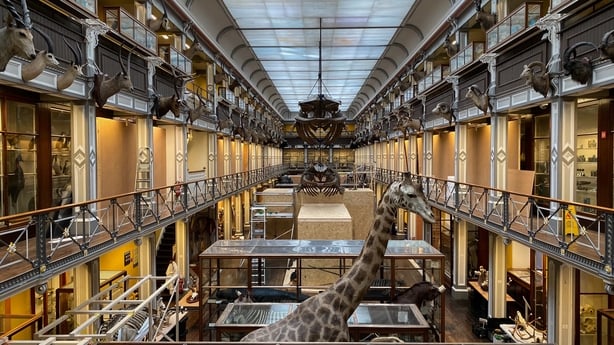Rory Gallagher's 1961 Fender Stratocaster is to go on display at Collins Barracks in Dublin, the National Museum of Ireland has said.
The guitar will be part of the legacy project of the Decade of Centenaries programme called 'Changing Ireland'.
Widely considered as one of the greatest guitarists of all time, the Donegal man famously first bought the instrument in 1963 for £100.
It was sold at auction in October for more than £889,000.
Purchased by Live Nation Gaiety, the company stated its intention at the time to donate the guitar to the National Museum of Ireland and visitors will be able to see it for themselves from September.
The guitar is one item among a varied range of everyday, artistic, institutional, political and military objects that visitors will be able to see in the most significant expansion of public galleries at the museum in two decades, the launch heard.

The National Museum of Ireland launched its programme for this year and invited visitors to "join the conversation".
"Our National Museum is for everyone and we have a lot of exciting developments ahead in 2025 and are delighted to be sharing some of the highlights," Director Lynn Scarff said at the launch.
She explained that "our ambition for 2025 and always, is to spark conversation".
The new galleries have been designed to support the regular rotation of artefacts, which will support unprecedented access to the National Museum's 20th and 21st-century history collections.
The team has also announced a major exhibition featuring the largest ever international loan of ancient manuscripts from Stiftsbibliothek, St Gallen in Switzerland which will feature as part of major exhibition in Kildare Street, called 'Words on the Wave'.
In a world first, 17 manuscripts will travel to Ireland for this exhibition from the UNESCO World Heritage site, Stiftsbibliothek, St Gallen in Switzerland - home to an important collection of early medieval manuscripts.
We need your consent to load this rte-player contentWe use rte-player to manage extra content that can set cookies on your device and collect data about your activity. Please review their details and accept them to load the content.Manage Preferences
Some of these manuscripts were written by Irish scribes and they will be returning to Ireland for the first time in more than 1,000 years.
The National Museum holds the world's largest collection of early medieval Irish objects, and the exhibition will showcase more than 150 objects from this collection to illustrate the level of contact between Ireland, Britain and the Continent in the Early Medieval Period.
The collection will include the famous Faddan More Psalter and the Lough Kinale Book Shrine - the earliest and largest container for a sacred book found broken apart in a Westmeath lake, conserved and interpreted in its entirety and on exhibition for the first time since its discovery.
It will open at the National Museum, Kildare St in May, exploring Early Medieval Ireland and its influence on Europe.
Meanwhile, a temporary home for the 'Dead Zoo' or National History Museum will be opened.
With the National History Museum at Merrion Street now closed for conservation and refurbishment works, a new Dead Zoo Lab will open at the National Museum in the summer.

This new space will ensure that the public can still visit some of their favourite specimens from the Natural History Collection such as Spoticus the Giraffe and the Giant Irish Deer, as well as some specimens that have not been on display for years, such as the collection of Blaschka glass models of marine life.
The team at the museum will be using this new space to engage the public in conversation and actions to address biodiversity loss and climate change.
Throughout the year, the National Museum will be working with the wider public, students and communities in an extensive range of in-museum and online initiatives too.
For example, to celebrate the 10th anniversary of Ireland's Marriage Equality Referendum, a new LGBTQI+ guided tour will also be launched this summer exploring the museum's exhibitions through a queer lens.
Ms Scarff, said: "Museums are dynamic, inviting and evolving spaces where cultural heritage is not only preserved, but actively explored and reimagined; places of both reflection and inspiration, where ideas are welcomed, and new perspectives can emerge."
The National Museum collections are free of charge and are open to visitors seven days a week.


